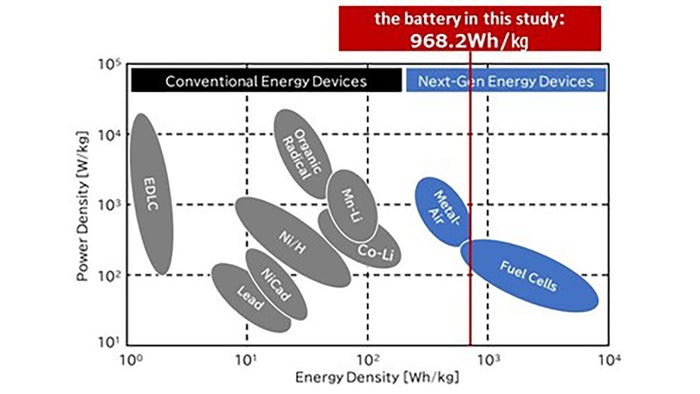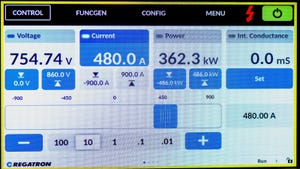
A collaborative effort spearheaded by AZUL Energy Inc. (based in Sendai, JP), Professor Hiroshi Yabu from the Advanced Institute for Materials Research at Tohoku University, Senior Researcher Shinpei Ono from the Central Research Institute of Electric Power Industry, and Amphico Ltd (located in London, UK), has announced a sustainable energy solution: A paper-based magnesium-air battery activated by water.
Harnessing nature's inspiration
Traditional batteries have long relied on rare metals, often sourced through environmentally damaging mining practices. Their disposal poses significant environmental risks due to toxic heavy metals and plastics. The team of researchers recognized these challenges and set out to create an alternative energy solution that addresses these concerns and delivers superior performance.
The result is a magnesium-air battery that harnesses the power of water and oxygen to generate electricity. Inspired by the respiration mechanism of plants, the battery mimics photosynthesis, converting magnesium as a substrate into power through the reaction with oxygen and water. This innovative approach provides a sustainable energy source and eliminates the need for toxic materials commonly found in conventional batteries.
"We drew inspiration for this device from the respiration mechanism of plants," stated Yabu, corresponding authors of the study. "Photosynthesis is analogous to the charge and discharge process in batteries. Just as plants harness solar energy to synthesize sugar from water in the ground and carbon dioxide from the air, our battery utilizes magnesium as a substrate to generate power from oxygen and water."
"We drew inspiration for this device from the respiration mechanism of plants," stated Professor Hiroshi Yabu from Tohoku University.
The battery's use of paper as a substrate is central to its design since it offers several advantages in this context. Its lightweight and thin nature reduces reliance on heavier metals or plastics, making it an ideal choice for wearable devices and other portable applications. Furthermore, paper-based devices are easier to dispose of and more environmentally friendly than their traditional counterparts.
Redefining paper-based energy storage
Paper-based magnesium-air batteries, like their predecessors in metal-air paper battery technology, have historically struggled with inadequate voltage and output levels. This deficiency limits their competitiveness against established battery technologies. Additionally, such batteries may face corrosion-related challenges, limited lifespan, and slow reaction rates, further complicating their widespread adoption.
However, this group of researchers effectively designed a battery with impressive performance metrics. The magnesium foil bonded onto the paper serves as the anode, while the cathode catalyst and gas diffusion layer are added directly to the other side of the paper. This simple yet effective design results in a battery that exceeds the capabilities of previous paper-based energy storage solutions. With a voltage of 1.8V, an output exceeding 100mW/cm2, and a high capacity of 968.2Wh/kg, the battery is a viable alternative to traditional battery storage.

Metal-air batteries have over three times the energy density of lithium-ion batteries on a weight basis. Courtesy of AZUL Energy Inc.
This new magnesium-air battery achieves these performance milestones without compromising safety or environmental impact. By utilizing carbon cathodes and a pigment electrocatalyst that have passed rigorous assessments, the battery ensures its operation remains free from toxic materials. This commitment to sustainability extends beyond the battery itself and encompasses every aspect of its lifecycle, from production to disposal.
"Not only did the battery demonstrate impressive performance results, but it operates without using toxic materials—instead, it uses carbon cathodes and a pigment electrocatalyst that have passed stringent assessments," added Yabu.
The versatility of the magnesium-air battery further enhances its appeal. In addition to its primary application in emergency power supplies and wearable devices, the battery has been successfully integrated into pulse oximeter sensors and GPS devices. This demonstrates its potential to power various electronic devices, further solidifying its position as a next-generation energy storage solution.
As the world transitions towards renewable and sustainable energy sources, advancements like the paper-based magnesium-air battery offer a glimpse into a greener and more sustainable future. By harnessing the power of water and oxygen and leveraging the versatility of paper, this breakthrough technology promises to revolutionize how we power our electronic devices while mitigating environmental impact.
About the Author(s)
You May Also Like





